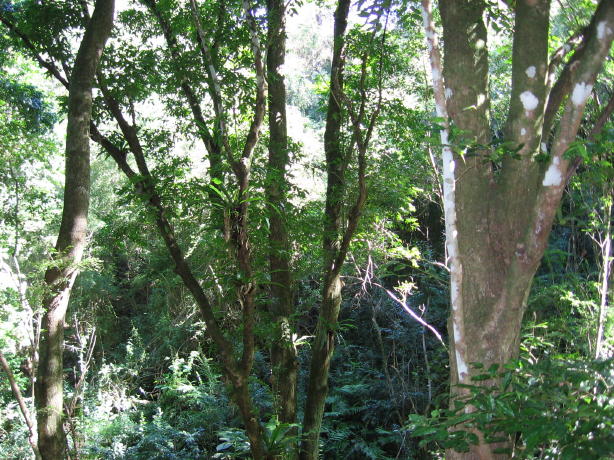Botanical name
Asperula asthenes
A common name Trailing
Woodruff
Seedling
I'll have a look in SpringYoung plant
Wait a bitJuvenile
ComingReasonably mature
I was having a look for something else and came across the vulnerable listing for it on the web and thought, hmm, that's been found here.
If you go to the right kinds of places it takes a just a few minutes to start finding Trailing Woodruff, tune the eyes and look inside the other plants or look for wispy spreading plants on the open ground. The plant you are looking for in this photo is under the branch and to the right of the branch.
Asperula asthenes tends to grow in among other plants, it has tiny hairs on the leaves that it grab hold of other plants and twigs to scramble through them. It doesn't do all that well on its' own out in the open.
This first group of 3 photos came from a South facing hill side, about 30m away from the creek.
The Trailing Woodruff is growing over a Pittosporum mulitflorum which is about 50cm high.
One of the interesting features of Asperula asthenes is the stipules. It seems to have whorls of 4 leaves, in fact 2 of those leaves are actually stipules, not true leaves.
The smaller pair of each set of 4 are the stipules, sometimes it is a little hard to see which is the smaller pair, I suspect it is the stipules which are rounded.
I'll keep an eye out for flowers during the year and I'm fairly certain I will find some seedlings if I look hard enough.



